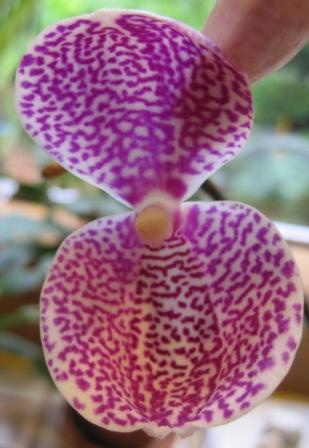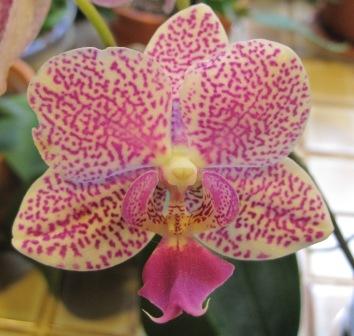As Paul suspected, this is a Phalaenoposis flower. Here it is again, shown next to another flower on the same plant (but different stalk):


As to the second question – why does it look this way – there could be a number of reasons. I’m leaning toward environmental. This particular flower stalk is an old one – after it had bloomed initially (with normal flowers), we left it on after the flowers fell. As often happens, new flower buds appeared, but all of them have been abnormal. Some were completely fused and never opened. This one is missing most of its petals.
Other reasons could include viral infection (as Sheila suggested) or somaclonal variation (common in tissue cultured plants, which is how many orchids are propagated). But this flower stalk is perpetually colder than the rest of the plant as it’s closest to the window. And since its first crop of flowers were normal, I think this variation is due to cold temperature interference during flower development.
If you have other ideas, be sure to post them!
Temperature is certainly a factor in bud development in Phalaenopsis, but if this orchid perpetually exhibits these abnormal flowers, the problem is genetic. Certain species and hybrids have a tendency to produce these “freaks of nature” and in selecting hybrids, these are typically culled out. Occasionally, some of these seedlings, that appear normal at first, are micropropagated (tissue cultured) and now you’re inundated with plants that could morph into something like what we see here.
I would still lean towards the temperature dealy being the factor.